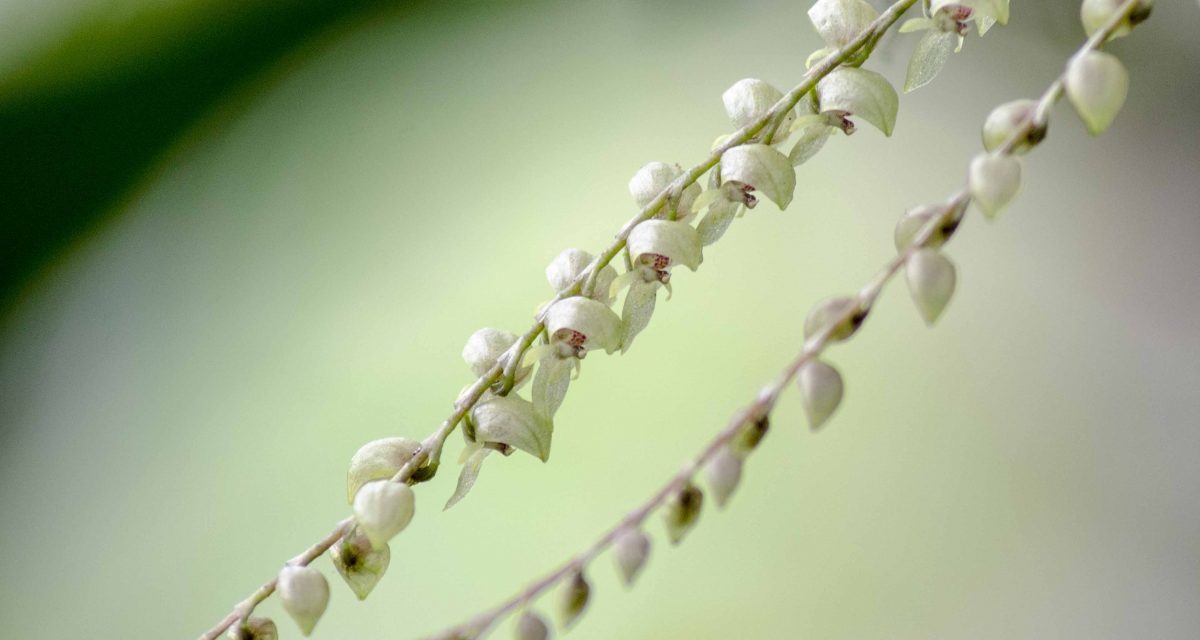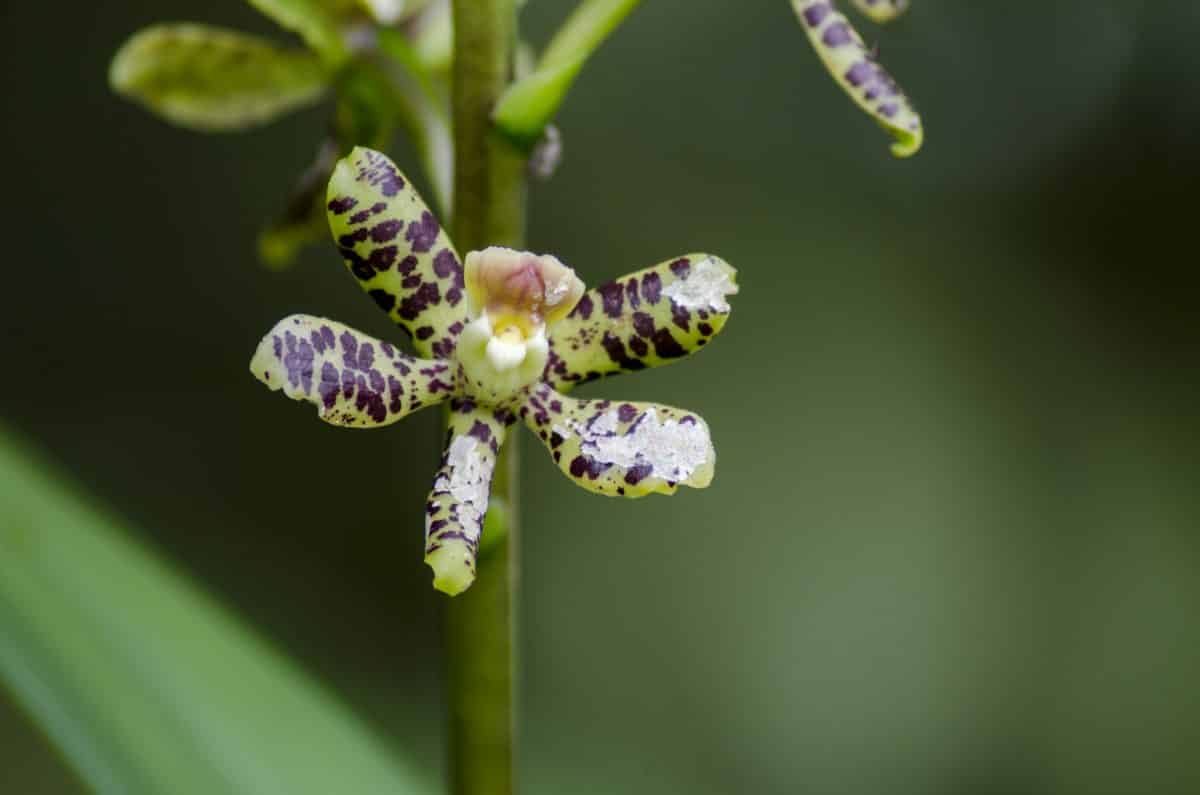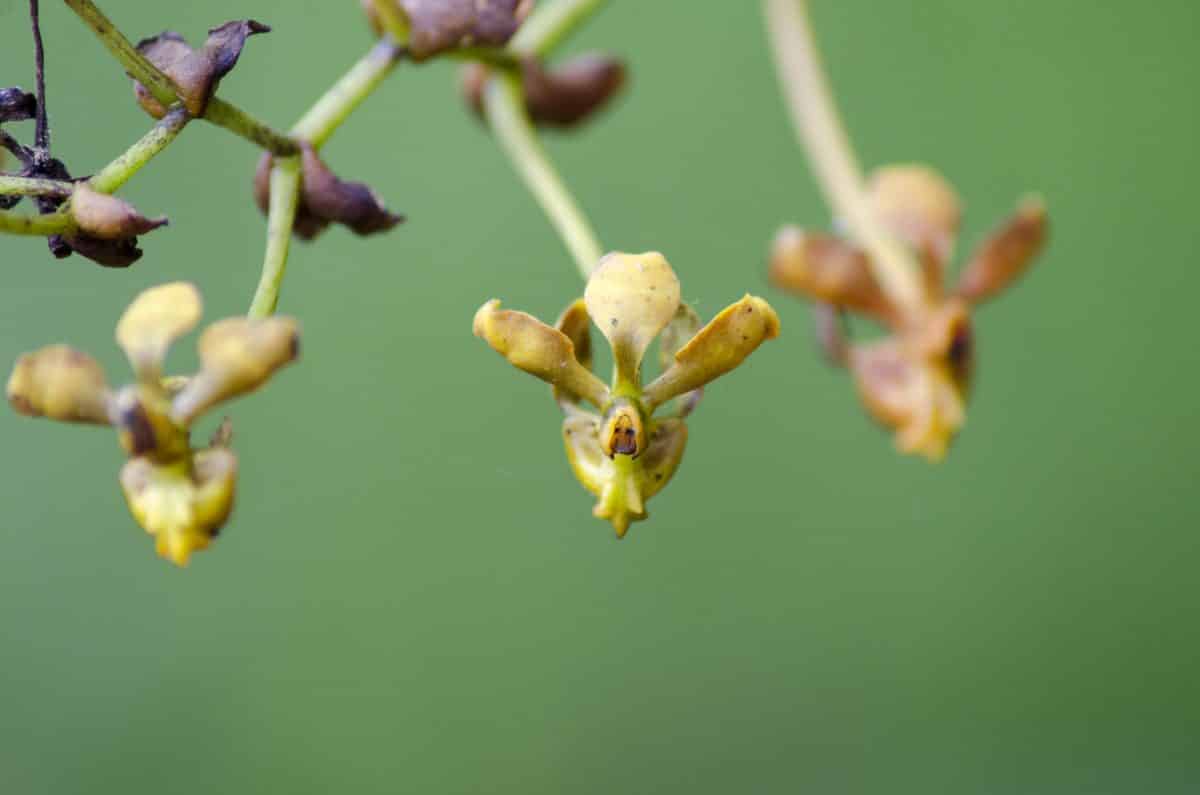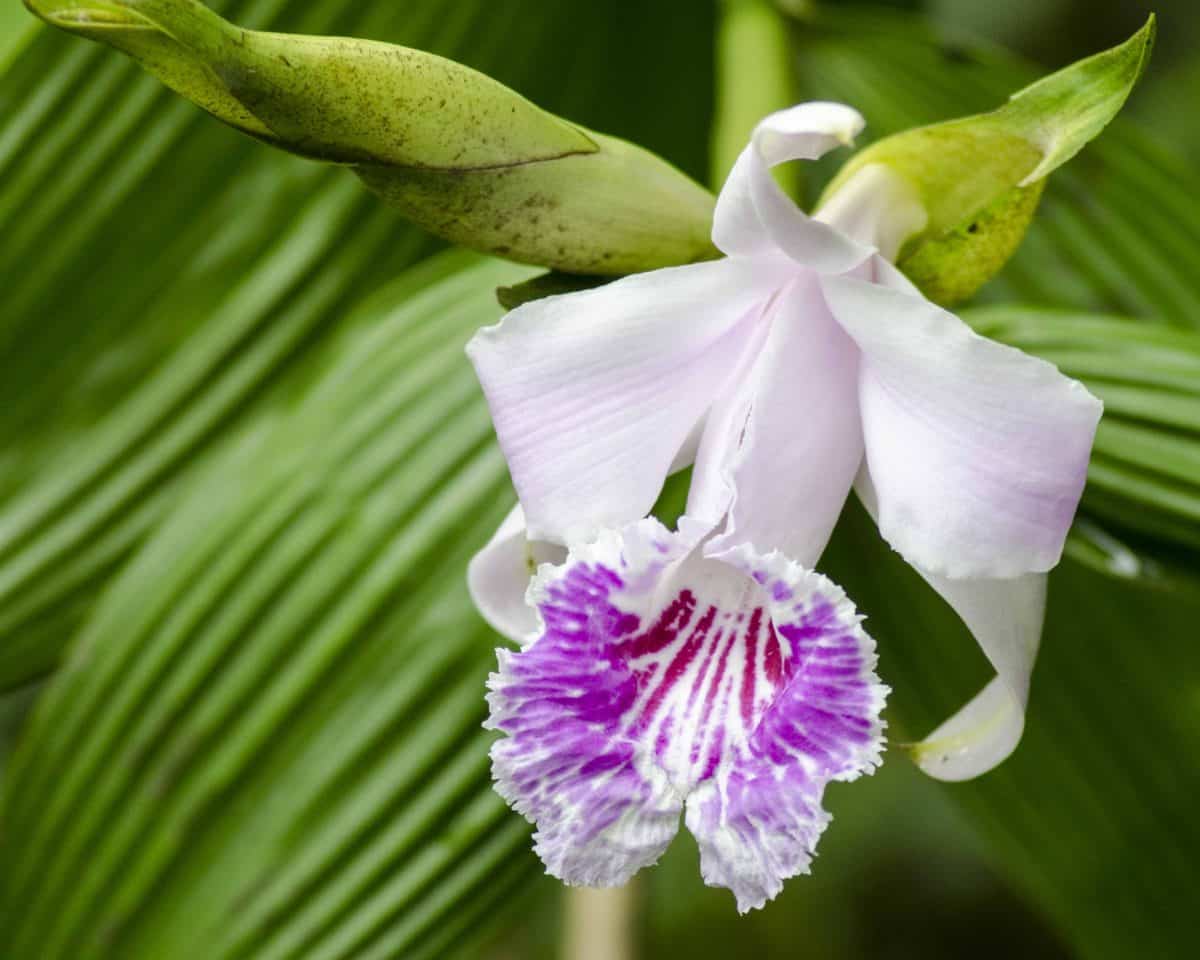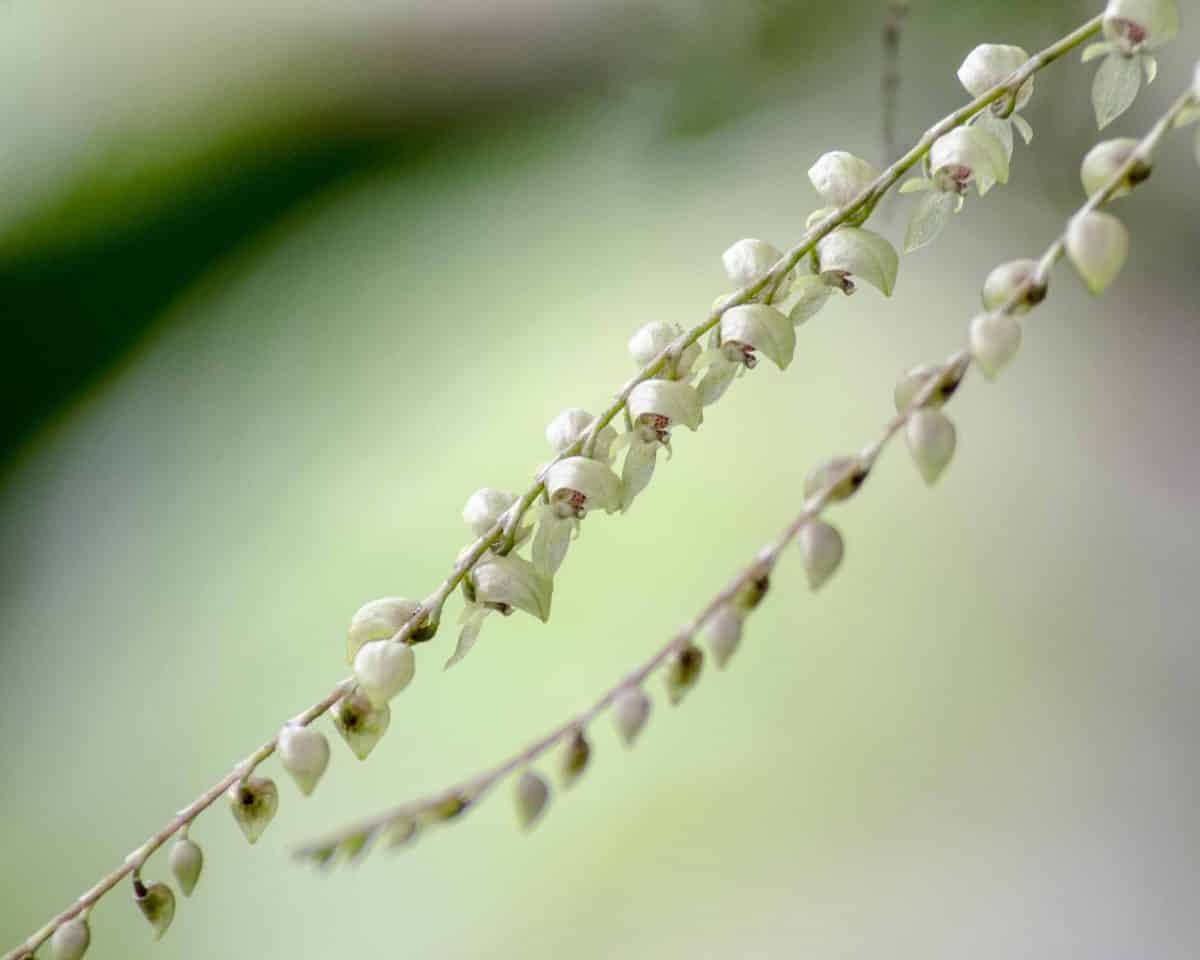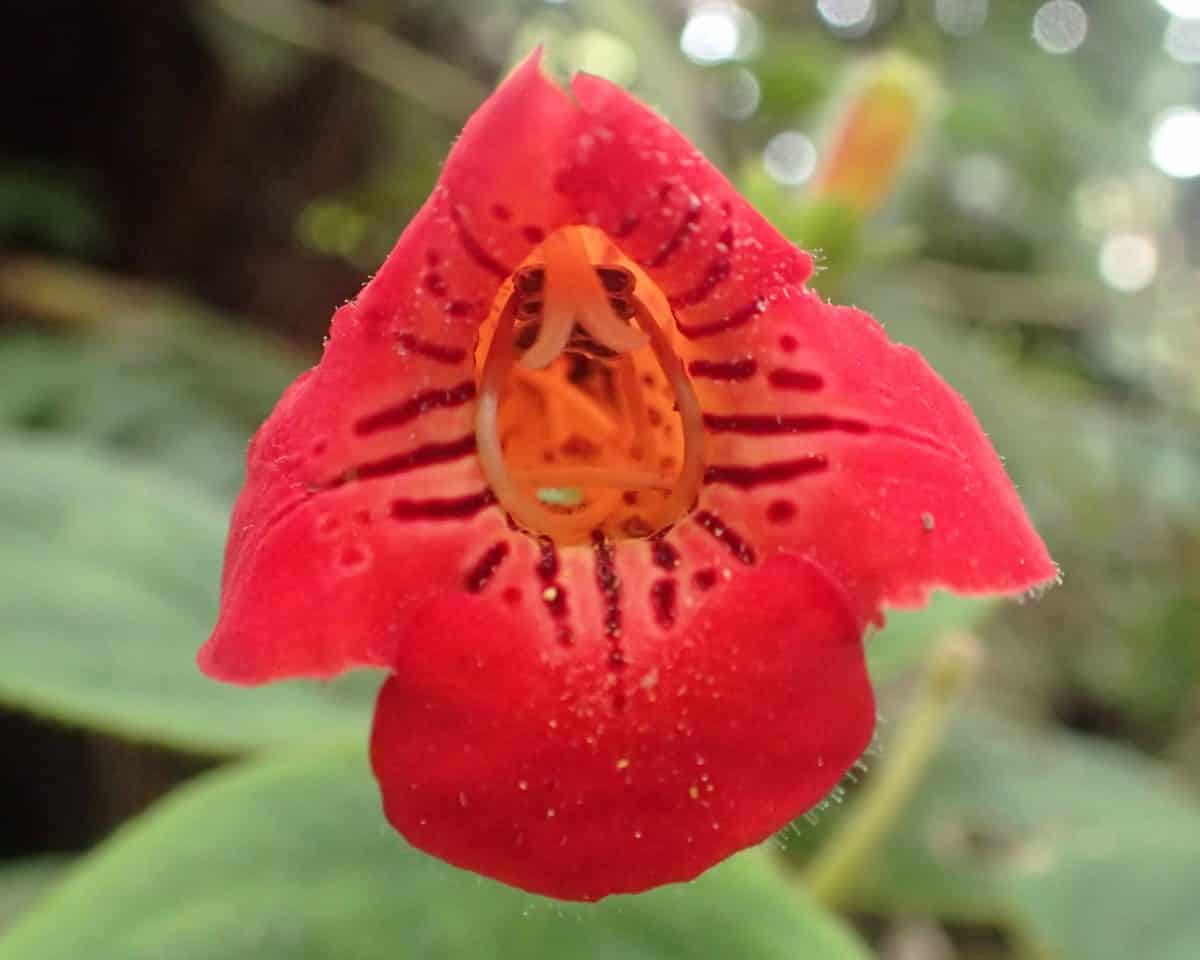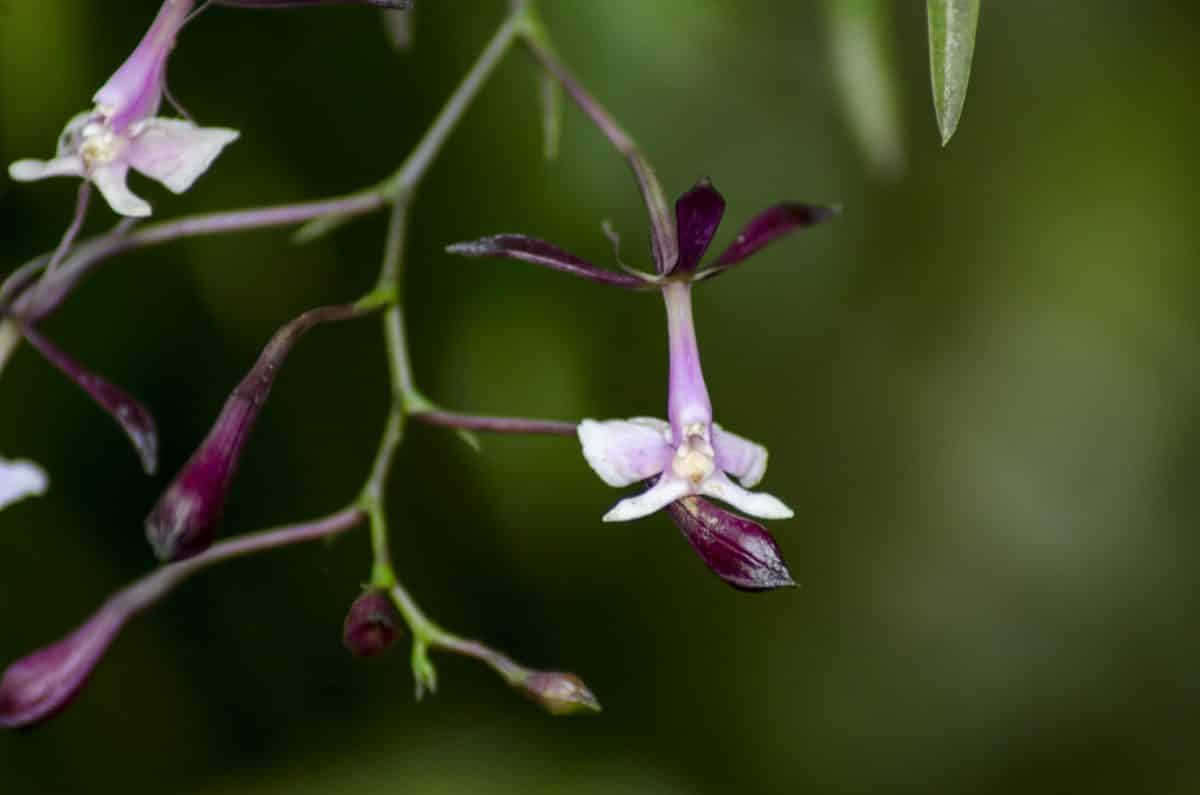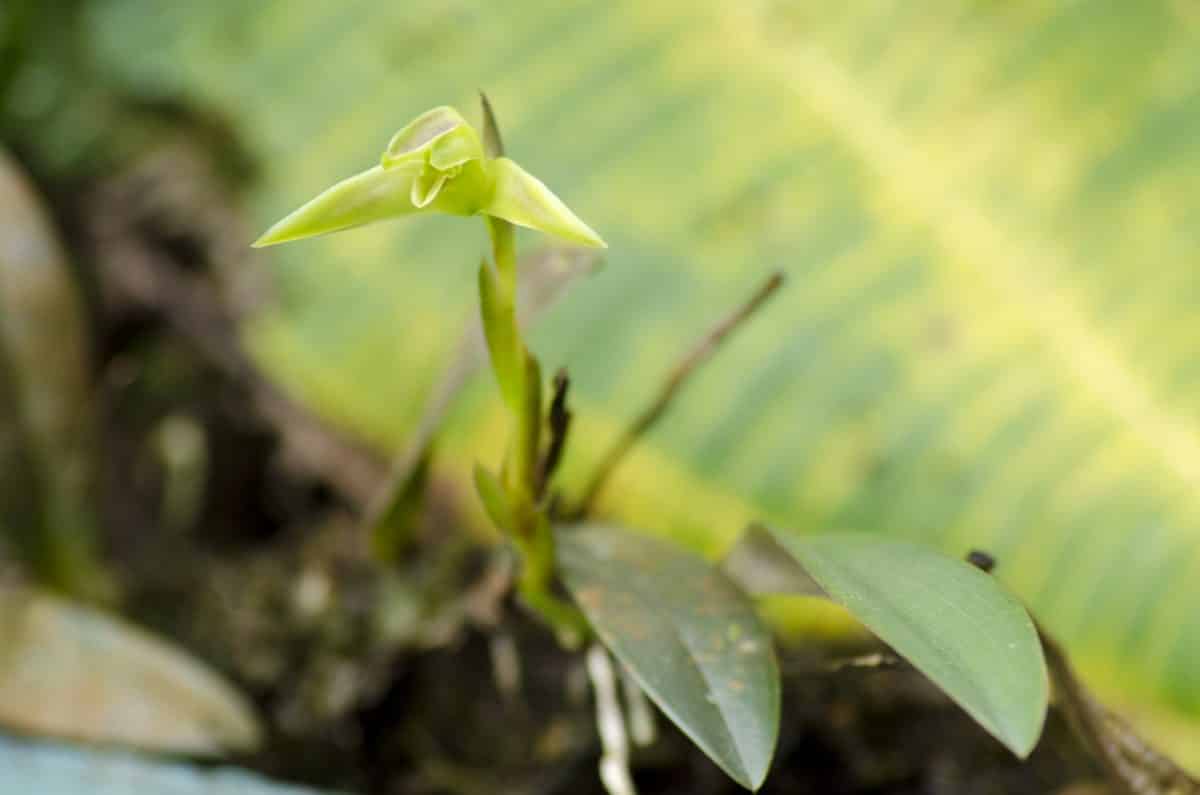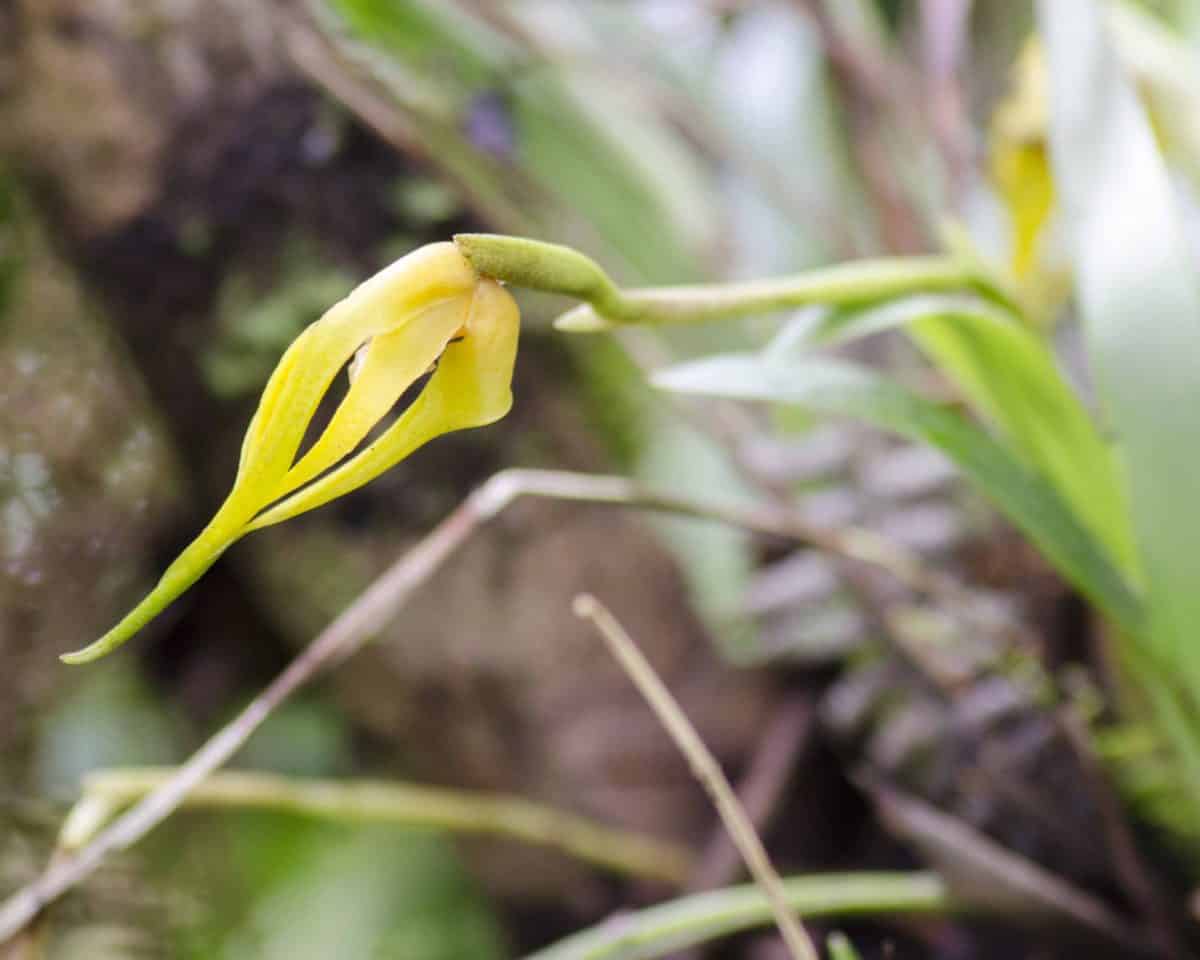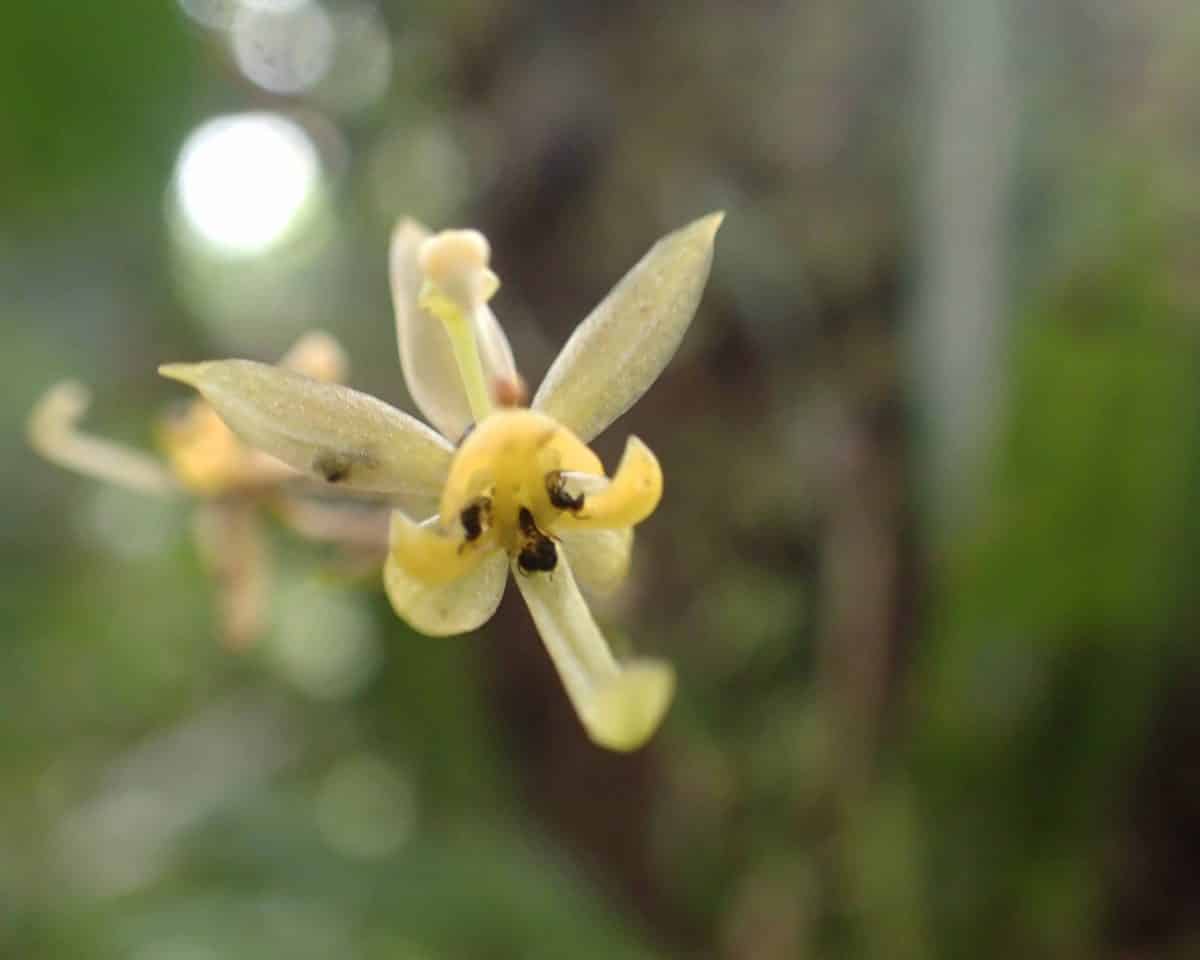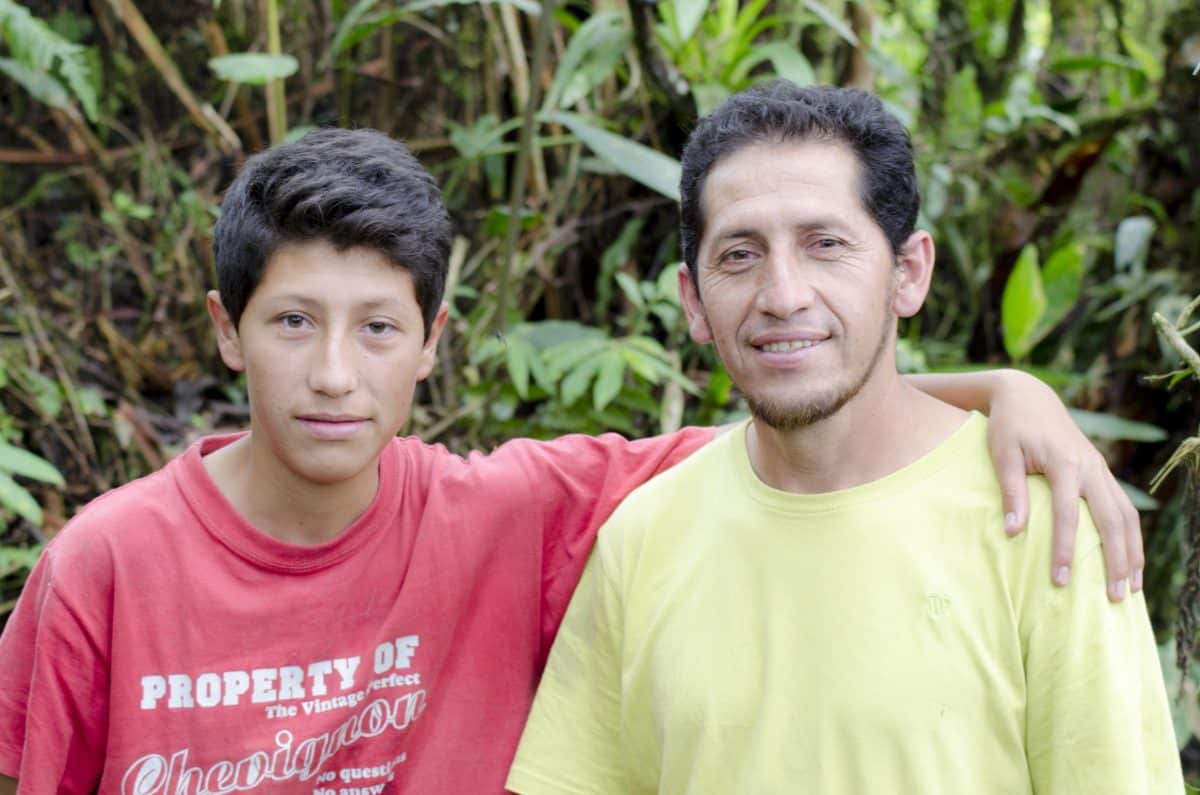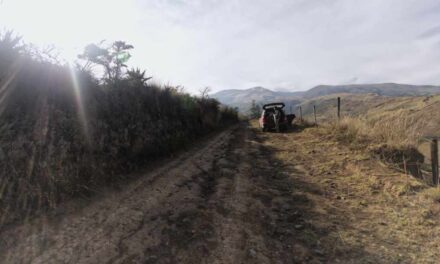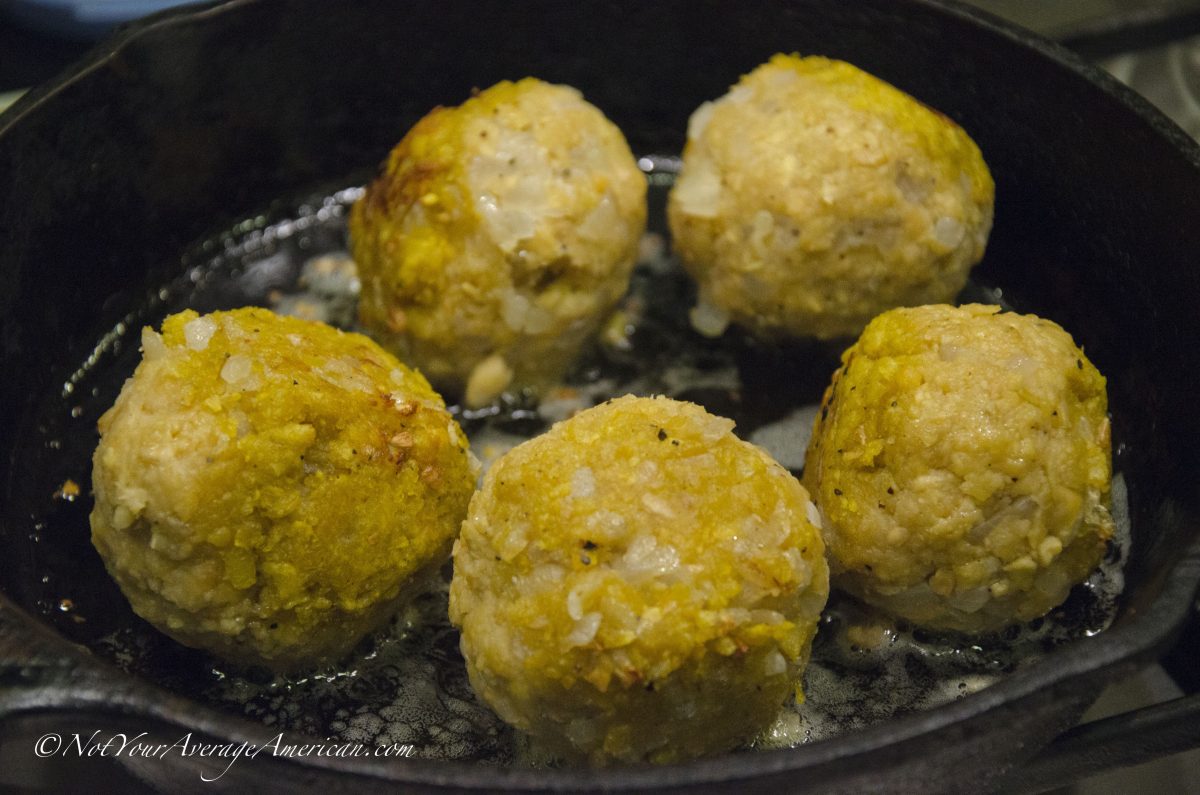As responsible travelers evolve, so do the stories we share.
This article is part of our living archive — trusted content we continue to care for.
First published on April 13, 2016 • Last updated on December 28, 2023.
Since we’re the kind of people who tend to take the road less traveled, we decided to head up the steep driveway and see exactly what kind of orchids were on offer. We arrived at a wide spot, a place where a couple of cars could easily park, and a couple of small buildings. No one seemed to be home though we hollered hello. The dogs barked but left us alone and we began to explore.
The outside patio of the main house was inviting in an odd way. What drew our attention was a collection of glass jars, each with a reptile or amphibian preserved in alcohol. The most striking was a snake that was bright blue. Artwork hung on the walls and along the ground were several pre-Columbian artifacts on display. We were in the presence of a naturalist, someone not unlike ourselves.
Since we couldn’t track anyone down, we decided to look for the orchids on our own. We found a few near the parked cars and that led us to a trail that headed downhill. Most of our group went to the trail but I stayed behind to begin photographing orchids with a macro lens and tripod.
And they are definitely his orchids. Although some grow naturally in this spot, many of the orchids have been transplanted. All of the transplants are orchids that have fallen from trees to the ground, either during the rainy season when branches become so waterlogged they become too heavy and fall or during the windy season when branches just crack and fall free. Edgar is so well known he now gets calls when people find fallen orchids and heads out to retrieve them. He analyzes the fall so that he can best place the orchids on his land in a place similar to where they had once thrived. Some orchids love great heights, others love shadows and damp ground. Some need sun, some need shade.
Some of the orchids on Edgar’s land have never bloomed. In fact, Edgar showed us one that he was seeing for the very first time although the plant has been on site for more than five years.
He has collected over 100 varieties of orchids and I think we saw about twenty-five on our visit in February. There always seem to be some orchids in bloom but the season for flowering is after the heavy rains, anywhere between January and May. Edgar encouraged us to come back and visit during his favorite month, May, when he said we would see the largest variety of orchids in flower.
Edgar and his son Michael have a way with these beautiful plants. Although Michael is still in high school, he has learned so much about the biology and botany of orchids that he will have a head start if he decides to one day study either science. Watching both of them point out hidden species and lovingly move stray branches or dead leaves so that we could better admire a tiny blossom, made me realize just how much time and effort they have both put into this enterprise. And for very little reward.
Our group paid a small entrance fee, a couple of dollars per person. But that is a drop in the bucket to the work that these two men are doing. They are saving species and have likely saved a few that have yet to be documented by scientists. Neither the local government nor the federal government help provide funds though the National Park did pay to put the sign on the road. If you can identify any of these orchids, I would be extremely grateful. Please leave a comment below! If you are interested in visiting, you can just drop in. But if you want to be guaranteed a guided tour, which we HIGHLY recommend, you could call ahead. Edgar does not speak English. Michael is learning English but probably could not manage a telephone call.
Approximate Location of Orquideario San Cristobal
Information For Your Trip
Trail is steep and might be muddy. There is plenty of shade. Bring insect repellent and your own bottled water.
- Direction by Car, use WAZE and look for El Chaco, Napo Province. Drive through town and remain on the highway for about 20 kilometers
- Telephone number for Orquideario San Cristobal – 098-407-9953

